#natty bumpo
Text
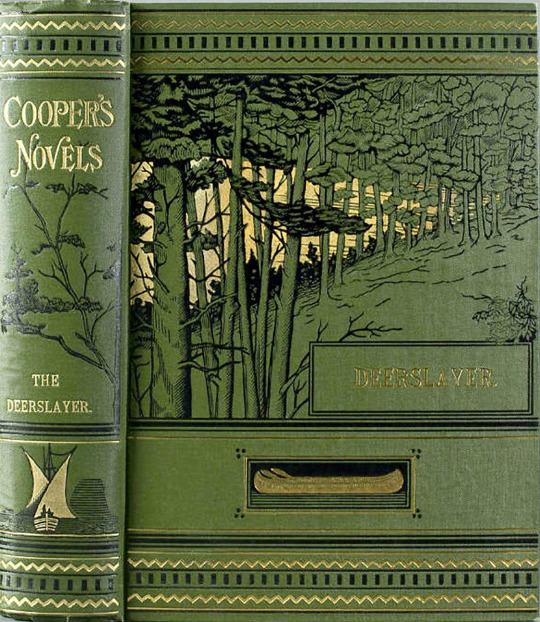
THE DEERSLAYER, or, THE FIRST WAR-PATH: A Tale by James Fenimore Cooper (1789-1851). (New York: Appleton, 1883). Illustrated by Felix Octavius Carr Darley.
Part of a set of Cooper’s Novels.
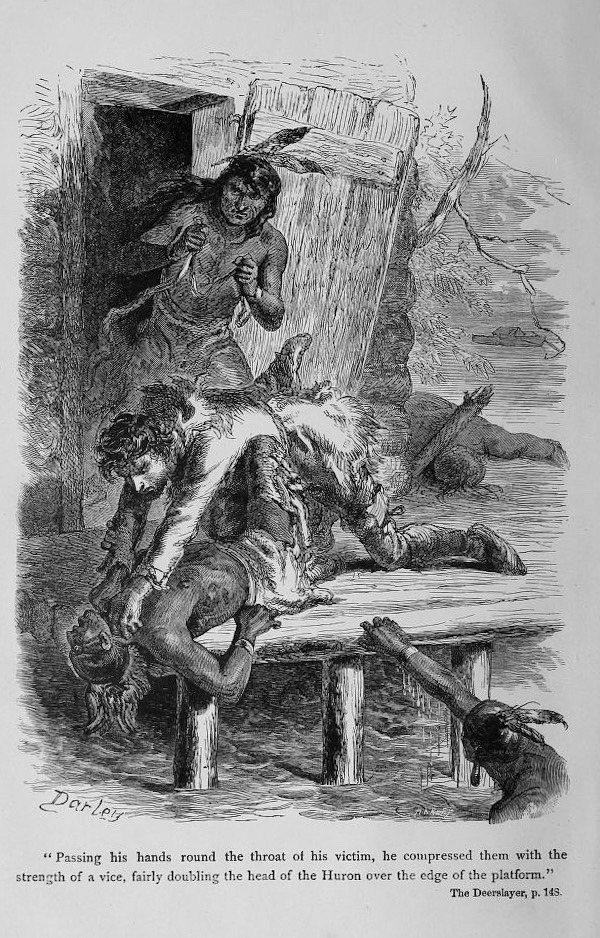
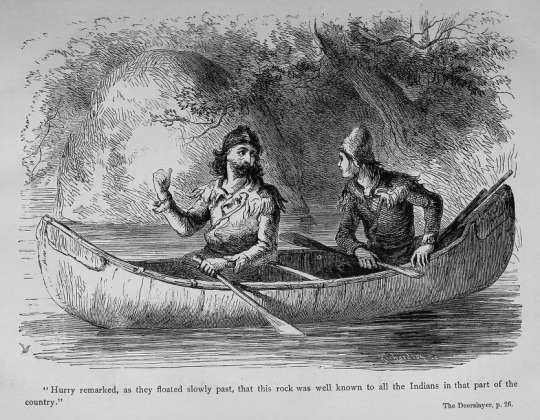
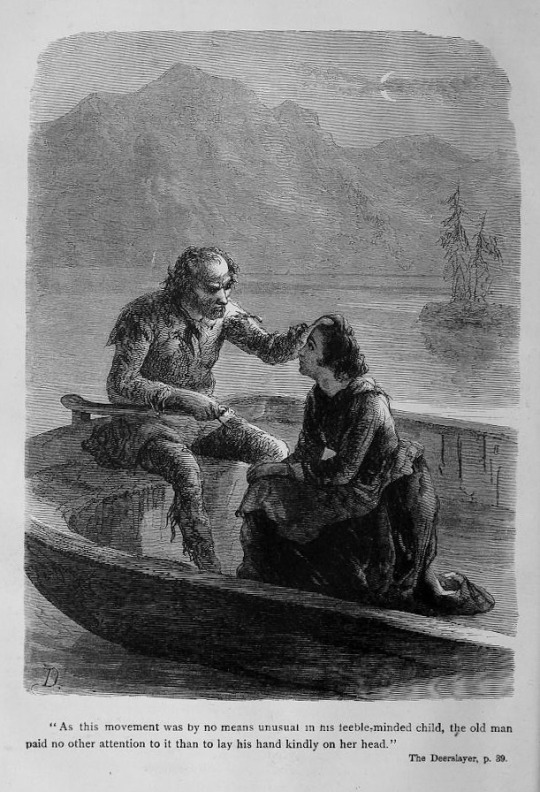
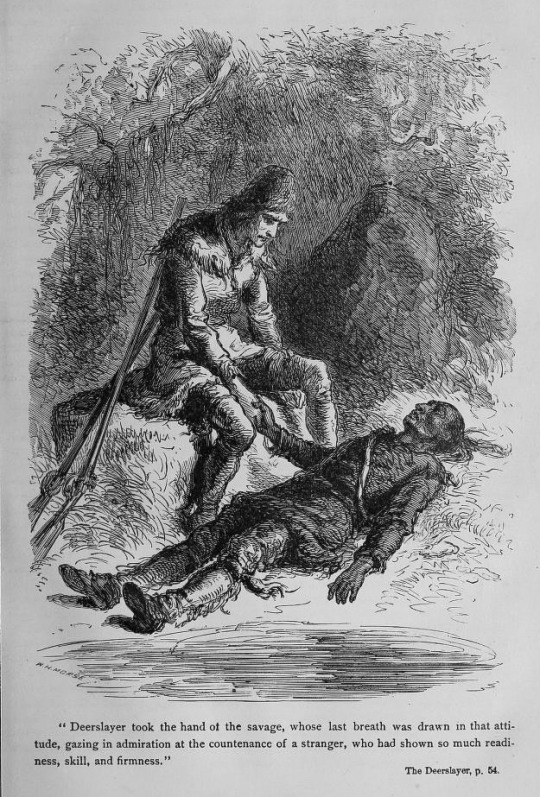
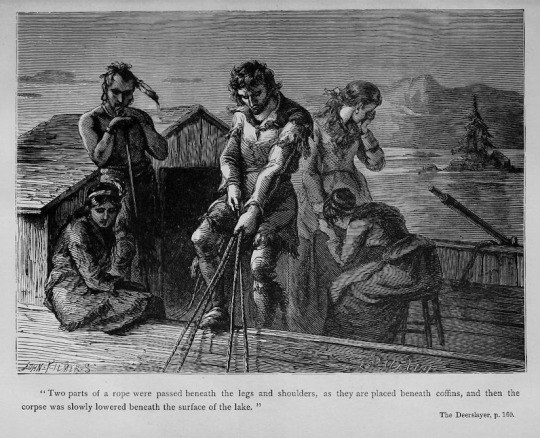
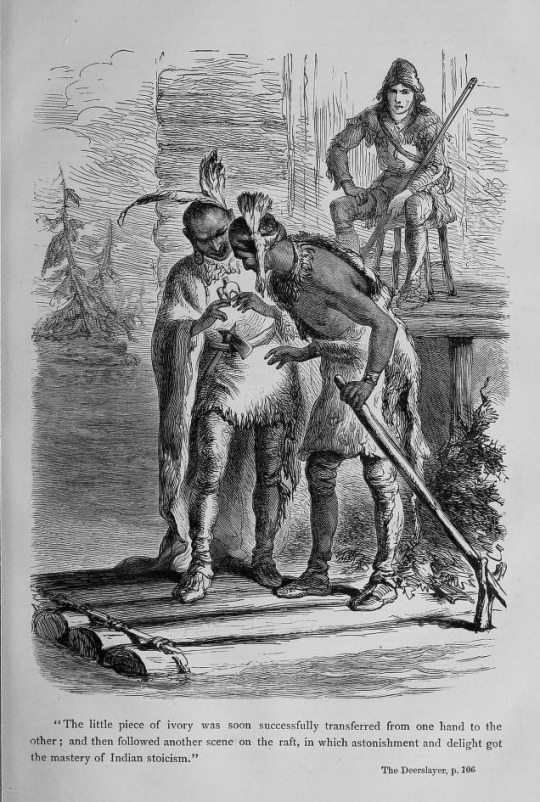
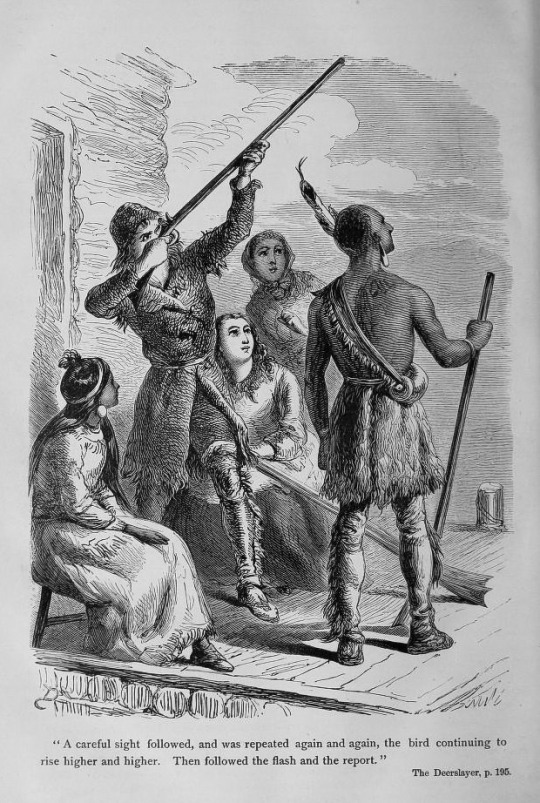
source [another edition, illos are here]
#beautiful books#book blog#books books books#book cover#books#vintage books#illustrated book#book design#james fenimore cooper#the deerslayer#felix octavius carr darley#french and indian war#natty bumpo
12 notes
·
View notes
Text
Mark Twain being Fennimore Cooper's biggest hater is not talked about enough.
The way he breaks down Cooper's works point by point Tumblr style is so fucking funny.
In one place in 'Deerslayer,' and in the restricted space of two-thirds of a page, Cooper has scored 114 offences against literary art out of a possible 115. It breaks the record.
There are nineteen rules governing literary art in the domain of romantic fiction—some say twenty-two. In Deerslayer Cooper violated eighteen of them. These eighteen require:
1. That a tale shall accomplish something and arrive somewhere. But the Deerslayer tale accomplishes nothing and arrives in the air.
2. They require that the episodes of a tale shall be necessary parts of the tale, and shall help to develop it. But as the Deerslayer tale is not a tale, and accomplishes nothing and arrives nowhere, the episodes have no rightful place in the work, since there was nothing for them to develop.
3. They require that the personages in a tale shall be alive, except in the case of corpses, and that always the reader shall be able to tell the corpses from the others. But this detail has often been overlooked in the Deerslayer tale.
0 notes
Photo

US Post Office-Cooperstown is a historic post office building located at Cooperstown in Otsego County, New York, United States. It was built in 1935-1936, and is one of a number of post offices in New York State designed by the Office of the Supervising Architect of the Treasury Department, Louis A. Simon. It is one story in front and two stories in the rear with and exposed basement. It is constructed of brick on a raised concrete foundation and limestone watercourse and beltcourse. The principal facade is symmetrically composed with a three bay pedimented central section faced entirely with ashlar limestone. The building displays Colonial Revival style details. The interior features a 1938 sculpture by artist Bela Janowsky depicting James Fenimore Cooper and two characters from his writings, Chingachgook and Natty Bumpo. (at Cooperstown, New York) https://www.instagram.com/p/CrcsqJGOUMI/?igshid=NGJjMDIxMWI=
0 notes
Photo




I just rewatched this movie recently, and now I’m rereading the book (which I don’t think I’ve done since high school).
#last of the mohicans#the last of the mohicans#cora munro#alice munro#hawkeye#nathaniel Poe#natty bumpo#chingachgook#handshake meme that’s just me and Hawkeye hating reform theology#i didn’t even draw my favorite character#yet#sketch#sketches#artists on tumblr#artists of instagram
41 notes
·
View notes
Text
youtube
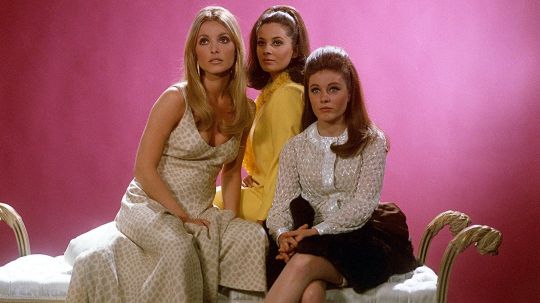
1 note
·
View note
Note
Another Last of the Mohicans fan? Clearly you are a man of superior taste
The movie yes, it's is perfection from the casting to the sets to the filming and the acting I couldn't want for better.
Soundtrack is one I have in rotation too
Absolute A+ don't do anything to it film.
Daniel Day Lewis is such a wild method actor if you've never looked into what he did to prepare himself for that film you should.
The Leatherstocking Tales on the other hand I could not follow for the life of me and I don't think that had anything to do with my dyslexia or adhd.
"Natty Bumpo" kinda was weird to read over and over again.
It's probably been 25+ years since I tried to read through them so they might play better now, but I'm really just very happy with the film by itself.
9 notes
·
View notes
Text
Super Duper Supermen
This will be a long one,
so pour yourself a cuppa
and settle down.
We may seem to meander,
but we’ve got a destination.
. . .
I’m tired of superheroes.
I’m tired of a lot of genre fiction.
Part of the reason is that too much of the current material is ugly and loud, but the real reason is it isn’t fresh, it isn’t fun.
I tried watching The Boys. I got to the end of the second scene of episode one and realize, “This ain’t for me” and turned it off and went over to YouTube and watched guys build model airplanes.
At least they look like they’re having fun.
. . .
Look, superheroes are a power fantasy and they’re okay for little kids who want to believe there’s always going to be a mommy or daddy who will protect them, but they’re an absurd genre at best and when you start taking them seriously -- and recently even the funny parodies and spoofs take themselves Too Damn Seriously -- they become horrific.
What prompted me to realize this is an article posted on The Vulcan by Abraham Riseman “The Boys Is the End of the Superhero As We Know It.”
Highly recommended,
by the way.
. . .
It’s not like Riseman was the first to make this observation.
30+ years ago Gary Groth observed:
“Superman is one version of the hero with a thousand faces -- to employ the title of Joseph Cambell's excellent book on the subject -- and his appeal should therefore not surprise us. But Superman is a crude version of the hero; if you will, an elementary one. Unlike his more developed analogues in all the world's great religions, Superman does not offer love or goodwill, self-knowledge or contemplation as keys to man's salvation. He offers his own physical powers.”
And he ain’t the only one.
Alan Moore recently chimed in:
“They have blighted cinema and also blighted culture to a degree. Several years ago I said I thought it was a really worrying sign, that hundreds of thousands of adults were queuing up to see characters that were created 50 years ago to entertain 12-year-old boys. That seemed to speak to some kind of longing to escape from the complexities of the modern world and go back to a nostalgic, remembered childhood. That seemed dangerous; it was infantilizing the population.
“This may be entirely coincidence, but in 2016 when the American people elected a National Socialist satsuma and the U.K. voted to leave the European Union, six of the top 12 highest-grossing films were superhero movies. Not to say that one causes the other, but I think they’re both symptoms of the same thing — a denial of reality and an urge for simplistic and sensational solutions.”
. . .
I don’t like cruelty.
I used to enjoy old weird horror films back in the day -- movies like The Reanimator -- because I appreciated their absurdity and never took them seriously.
When the torture porn sub-genre came along, I lost interest in horror films.
The Babadook is the only modern one I’ve seen in the last 5 years and I enjoy it because like earlier horror films (and here I include both classic Universal / RKO movies and the artistry of Mario Bava and Dario Argento) it’s essentially a very dark fairy tale, not an exercise in cruelty for the sake of cruelty.
Violence doesn’t turn me off.
Sadism does.
And sadism is all about power and fascism is all about power, so when I remark on modern superhero and thriller and horror stories as being fascist, I know whereof I speak.
. . .
Superhero stories may not necessarily be tales told by idiots, but they are full of sound and fury, and signify nothing.
Ultimately superheroes fail because:
they can’t lose
they can’t win
There is no finality in the superhero genre. The damn Joker keeps crawling back, Les Luthor constantly schemes, Dr. Doom and Galactus pop up whenever things lag in the sales department.
Superheroes as a genre are failures insofar as they can’t permanently deal with these existentialist threats, nor can they step out of the way to let others deal with them.
Superheroes promise salvation but deliver bupkis, slapping a band-aid on a cancer and telling us it’s all better.
They can’t permanently defeat their greatest threats, yet neither can they be truly harmed by them.
I’ll grant you the occasional Captain Mar-Vel but they are very minor exceptions to the rule. Gwen Stacy was bumped off in The Amazing Spider-Man #121 in June 1973, first reappeared as a clone in May 1975 then several times thereafter, and most recently shows up as Spider-Gwen in Edge of Spider-Verse #2 (September 2014).
As Roy Thomas aptly observed: “In comics they’re only dead if you have a body and even then only maybe.”
(In fairness, there’s no finality in most formula / genre fiction either, but we’ll get to that in a bit.)
. . .
Before we delve deeper, let’s be clear as to what we’re discussing when we say “superheroes”.
They don’t need to possess “powers and abilities far beyond those of mortal men”.
As noted above, they just have to be:
always victorious
never in real danger
You can bash ‘em / trash ‘em / slash ‘em / smash ‘em and they still bounce back -- heroically -- to save the day.
Break both legs, riddle them with machine gun bullets, hit them with a car, cave in their skulls with sledgehammers, and yet somehow they summon up the super-human reserves needed to keep in the fight.
Mind you, in the real world there are people who display super-human endurance in horrific situations and not merely survive but go on to achieve incredible success. They don’t do such things every year (as do heroes in movies), much less every month (comics) or every week (television).
They sure as hell don’t make a career out of it.
Let’s veer away from brightly colored naked people flying & fighting to superheroes in a different genre than costumed crime fighters.
Mike Hammer is a superhero.
Sherlock Holmes is a superhero.
Philip Marlow might actually be a literary character.
Look at the criteria: Can they lose?
Never in Hammer’s case.
Rarely for Holmes (and when he does, it’s always with bittersweet irony).
Frequently enough with Marlowe that one can’t anticipate if any of his stories will end with him victorious (yeah, he solves mysteries, but always at profound personal cost, and in more than one novel he ends up realizing he’s been a sucker all along).
Here’s another example that snaps the dichotomy into ever sharper relief:
Samuel L. Jackson’s Shaft is a superhero.
Richard Roundtree’s Shaft is just a hero.
Roundtree’s Shaft is aware he can fail.
No “macho bullshit irony” as they say over at the Church of the Sub-Genius.
. . .
Superheroes don’t grow -- they decay.
They never truly use their power for good (because that would involve changing the world) nor do they adequately protect the innocent.
They serve no true function except to entertain and to be exploited.
Series novels and television shows can feature character growth, but the concept has to be baked in from the beginning (Jan Karon’s Mitford series and Armistead Maupin’s Tales Of The City books are two examples that spring immediately to mind).*
More typically, in series fiction the character/s show little actual growth; they are more or less the same at the end of their adventures as they were at the beginning, maybe a little greyer, maybe a little creakier, but essentially the same person.
Sometimes, particularly in military or nautical or police series, they may start out as a callow cadet but soon wise up to the stalwart hero we want to see.
As perfect an example of superhero decay can be found in the Die Hard movies.
The original’s superhero character, Detective John McClane, implausibly goes through a night of hell yet actually shows some character growth: By the end of the film he’s able to swallow his pride and admit to his wife he was wrong.
A very farfetched movie but an emotionally satisfying one. We’ll overlook a multitude of injuries that would have rendered him hors de combat in reality in exchange for the movie actually being about something.
All that gets chucked out in the first sequel, Die Hard 2, where the characters are thrown into a contrived situation to mirror the first film without the satisfying emotional growth but with far more ridiculous action; Die Hard With A Vengeance jettisons McClane’s marital relationship except as an afterthought and ups the absurdity of the story (indeed, it’s best viewed as an action comedy); Live Free Or Die Hard totally trashes all the character growth before it; and A Good Day To Die Hard not only trashed previous character growth but went so badly over the top that it and the star’s aging out hopefully are the one-two punch needed to end the series once and for all.
. . .
Look at non-superpowered / non-comic book superheroes and see how they fare.
D’Artagnan and the Three Musketeers are superheroes (conversely, Cyrano de Bergerac is not because the focus of his story is on who he is and not the what but the why of his actions; all the cool sword fighting is just bonus material).
Natty Bumpo is a superhero; anybody who can jump into a birchbark canoe from a tree branch 30 feet overhead without crashing through is a superhero because that character simple Can Not Lose.
For that matter, most 1950s TV cowboys and virtually all Italian Western protagonists are superheroes.
Tarzan is a superhero.
James Bond is a superhero (the SPECTRE / Blofeld arc in the novels and short stories actually do end up with him going through significant growth and personal change, ending with Smersh brainwashing him and sending him back to assassinate M…but then the British Secret Service intercepts him and a couple of paragraphs later he’s all better and off after The Man With The Golden Gun).
Modesty Blaise is a superhero.
Claire Starling is not a superhero, but Hannibal Lecter is (don’t give me that; even if you’re evil, when you’re the central character of a series of books / movies / TV shows you’re a damn superhero).
They’re all superheroes because they can’t lose and they can’t change their world and more importantly they can’t change themselves.
. . .
There is one exception to the above re superheroes, and that’s in the realm of sci- fi and fantasy stories.
Occasionally we find a character who becomes a king (viz Howard’s Kull) or a demi-god (viz Herbert’s Paul Atreides) and does alter their world for good or ill.
That, of course, is the ultimate power fantasy.
. . .
Fascism focuses on the Will and the Act.
It is a philosophy of movement.
It’s a philosophy that attracts the weak and the sadistic, because it promises protection from and power over others.
It’s a philosophy that actively seeks conflict, not necessarily overt violence, but the promise of same is always there.
. . .
A brief sidebar to the other side of the comic book spinner rack.
Funny animals are essentially anti-authoritarian.
From Aesop forward to Carl Barks, their characters, filled with all too human foibles, can and do fail.
And when they win?
Ah, then it’s almost never by force or action, but by cleverness.
Funny animals are tricksters, accurately sussing out a situation and maneuvering to gain the best outcome for themselves without obtaining dominance over their opponent.
Bre’r Rabbit and Bugs Bunny.
Ducks Donald, Daffy, and Howard.
Superhero stories seems obsessed with keeping everything orderly and in continuity.
Without continuity, anything goes, and that’s fatal to the superhero trope as it annihilates authority.
Funny animal stories rarely feature continuity and when they do, it’s rarely rigorous. If Porky Pig needs to be a businessman or a farmer or a studio executive or a traveling salesman, so be it.
He’ll be something else in the next story.
As tricksters, funny animals are bounded by one rule:
They may save themselves and seek justice, but they will pay a penalty if they try to use trickery for selfish gain.
Howard the Duck -- “trapped alone and afraid / in a world he never made” -- is just trying to stay survive.
Daffy Duck -- greedy little miser that he is -- inevitably gets it in the neck when he tries to cheat someone.
Donald Duck -- floating somewhere between Howard and Daffy in his motivations -- finds no guarantee of success and reward, yet achieves success often enough to keep striving.
He may battle mummies or a reluctant coke machine, his stories may take him around the world on an adventure or no further than his kitchen to fix dinner.
It doesn’t matter.
Who he is makes his stories compelling far more than what he does.
He’s not on a power trip.
He doesn’t feel he has to win every time.
And as a result, he has a much richer life than Bruce Wayne or Tony Stark.
. . .
“So whaddya sayin’, Buzz? ‘Superheroes is bad’?”
No.
I deny no one their pleasure.
But I also think there are times when we have to demand not just more of creators but of ourselves as an audience with the media we consume.
I only saw the first two scenes of the first episode of The Boys.
That was all it took to convince me not to watch it anymore.
For similar reasons, I have no desire to watch Mad Men or Breaking Bad or Better Call Saul or Game Of Thrones.
I’ve picked up a strong enough vibe from each to know I’m not going to connect with them.
I’m certainly not saying you can’t enjoy them if you like.
Bu I am saying we’re cheating ourselves by not demanding more.
And until we start demanding more, the studios and streamers are only going to offer us less and less variety.
C’mon, people, we deserve more than that.
© Buzz Dixon
* I’m sparing you a whole long analysis of The Mary Tyler Moore Show because frankly it goes too far afield of this essay’s central thesis and besides I can use it for another blog post in the future.
4 notes
·
View notes
Text
Classic Book Review: The Last of the Mohicans
Classic Book Review: The Last of the Mohicans

The Last of the Mohicans (The Leatherstocking Tales #2)
by James Fenimore Cooper 3 out of 5 stars
When the two Munro sisters, Cora and Alice, are captured by the evil Huron Magua, Natty Bumpo and his Mohican friends, Uncas and Chingachgook, must track them down and free them.
For the most part, I liked the writing style which reflects the time period very well. The writing has a very…
View On WordPress
#american classics#book#book review#books.#classic#classic adventure#classic book#classic books#classic literature#classic review#classics#read#reading#review
0 notes
Photo

Free Cat Dreams Thought you all might like a break from Chained Dog Dreams. These are our cats Natty Bumpo and Little Bear.
0 notes
Text
Natty Bumpo in The Deerslayer
In 1841, an author named throng Fenimore Cooper wrote The Deerslayer, the fifth intensity in his series titled, The Leatherstocking Tales. The series revolves around his character named rattling Bumpo. Also known as The Deerslayer, Bumpo is normally seen as a leader. But in this case, fashionable Bumpo is not an example of a hero due to his taunts, nonpayment plan, and pride towards his death. Although Bumpo seems brave by not flinching at the knives cosmos thrown at him, his actions adjacent them jeopardize his title as a hero. As the Hurons witness laid closer to throw at him, he begins to taunt them, fashioning these Indians angry. Bumpo says, Throw away Huron, or your tomahawk volition exit its arrnd (page 121). This exemplifies how rude Bumpo is, and heroes ar not rude; theyre always kind to others irrespective of who they are. Soldiers in the army, for example, are normal heroes. They are nice to all captain, lieutenant, or sergeant they know, which demonstrates respect. By making fun of the Hurons, Bumpo lacks respect, restrain him from being a hero.\n non only does Bumpo lack respect, he lacks morale in his bilk plan. As the English are closing in, and it is understood that they will experience death, Bumpo decides to leave, leaving female genital organ men, women, and children to be killed by English populate. The English pretty a great deal did the dirty work for Bumpo. He carefully timed it right-hand(a) and left, not processing anyone. It is quoted, Deerslayer watched his opportunity, (page 125) demonstrating he made his actions deliberate to get himself out of there. Real heroes help people regardless if they unavoidableness to get themselves out first. A firefighter is a outpouring example of this, they get people out of danger putting their own life at risk, not caring if they evasion or not. Bumpo does not make this either, confirming he is not a hero.\nLastly, Bumpo shows pride in himself when he is let publish fro m the Indians, making it difficult to be classified as a hero....
0 notes
Text
Natty Bumpo in The Deerslayer
In 1841, an author named James Fenimore cooper wrote The Deerslayer, the fifth book in his series titled, The Leatherstocking Tales. The series revolves nearly his character named Natty Bumpo. likewise kn knowledge as The Deerslayer, Bumpo is comm simply seen as a leader. and in this case, Natty Bumpo is non an physical exercise of a supporter due to his taunts, escape plan, and primp towards his death. Although Bumpo seems brave by non flinching at the knives be thrown at him, his actions following them adventure his title as a hero. As the Hurons come contiguous to throw at him, he begins to taunt them, fashioning these Indians angry. Bumpo says, obligate away Huron, or your hatchet will for make grow its arrnd (page 121). This exemplifies how rude Bumpo is, and heroes are non rude; theyre forever kind to others regardless of who they are. Soldiers in the army, for example, are everyday heroes. They are nice to every captain, lieutenant, or sergeant they know, w hich demonstrates respect. By making fun of the Hurons, Bumpo lacks respect, limiting him from being a hero.\nNot only does Bumpo lack respect, he lacks esprit de corps in his escape plan. As the English are terminal in, and it is understood that they will bonk death, Bumpo decides to leave, leaving behind men, women, and children to be killed by English masses. The English pretty much did the cruddy work for Bumpo. He carefully timed it right and left, not helping anyone. It is quoted, Deerslayer watched his opportunity, (page 125) demonstrating he make his actions deliberate to get himself bug come out of there. Real heroes help people regardless if they want to get themselves out first. A relief pitcher is a prime example of this, they get people out of danger putting their own life at risk, not caring if they escape or not. Bumpo does not perform this either, collateral he is not a hero.\nLastly, Bumpo shows pride in himself when he is let free from the Indians, making it difficult to be sort out as a hero....
0 notes
Text
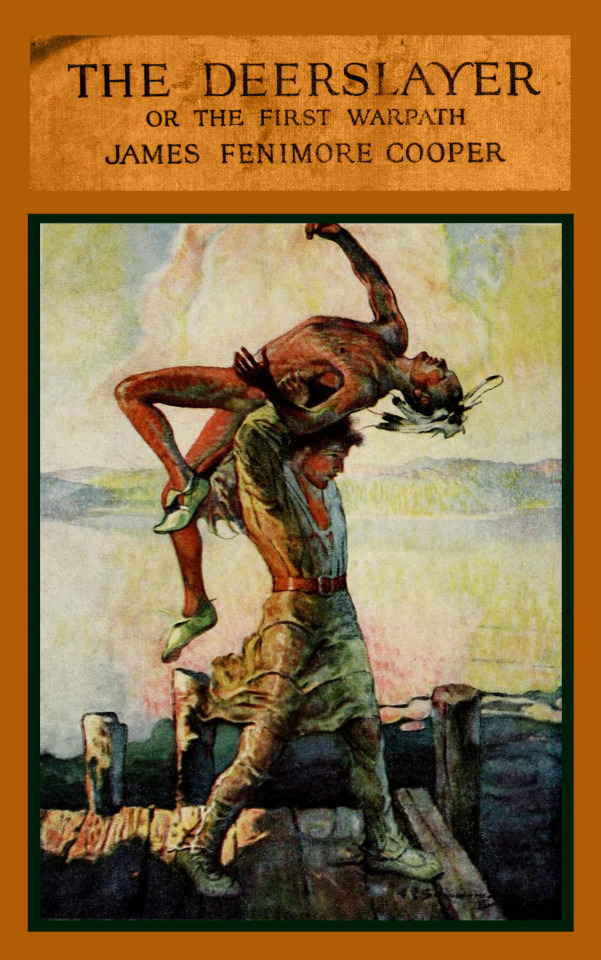
THE DEERSLAYER; OR, THE FIRST WARPATH by James Fenimore Cooper (1789-1851) (New York/London: Harper, 1926) Illustrated by Louis Rhead.
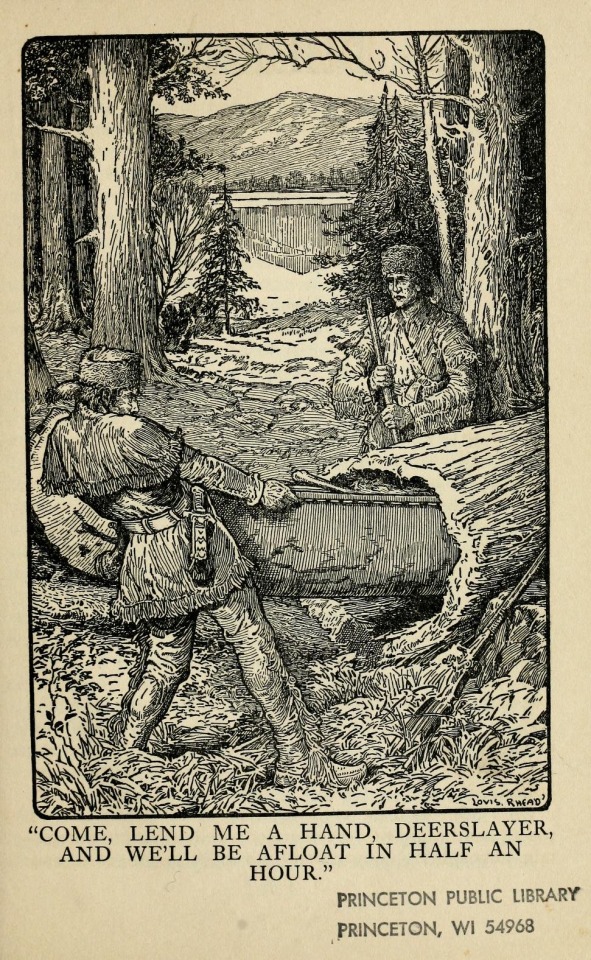
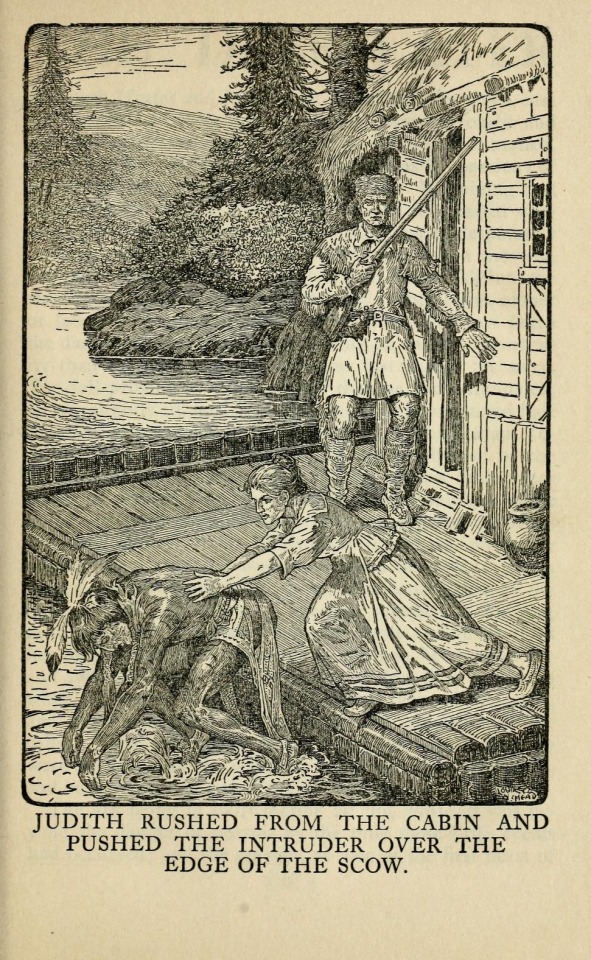
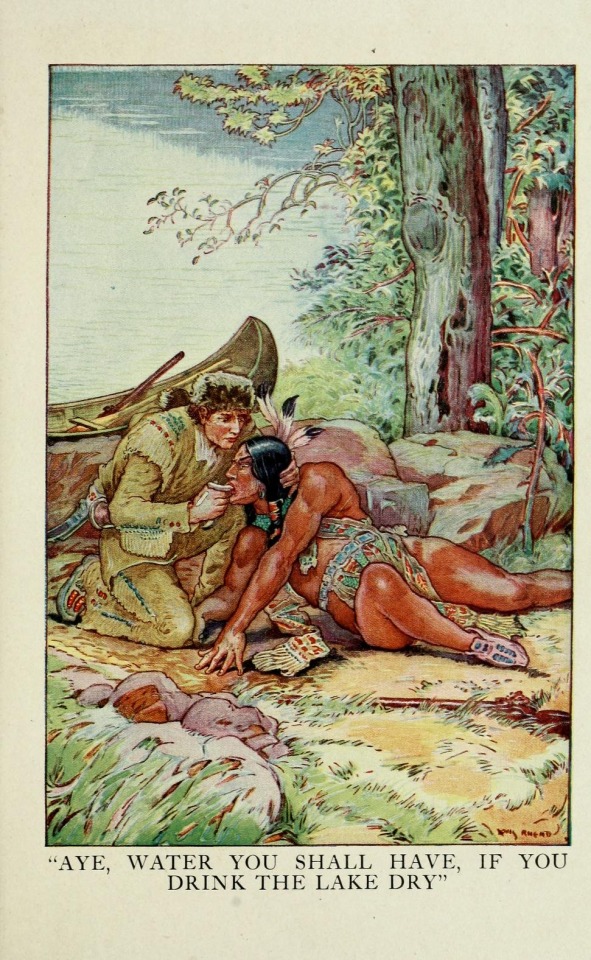
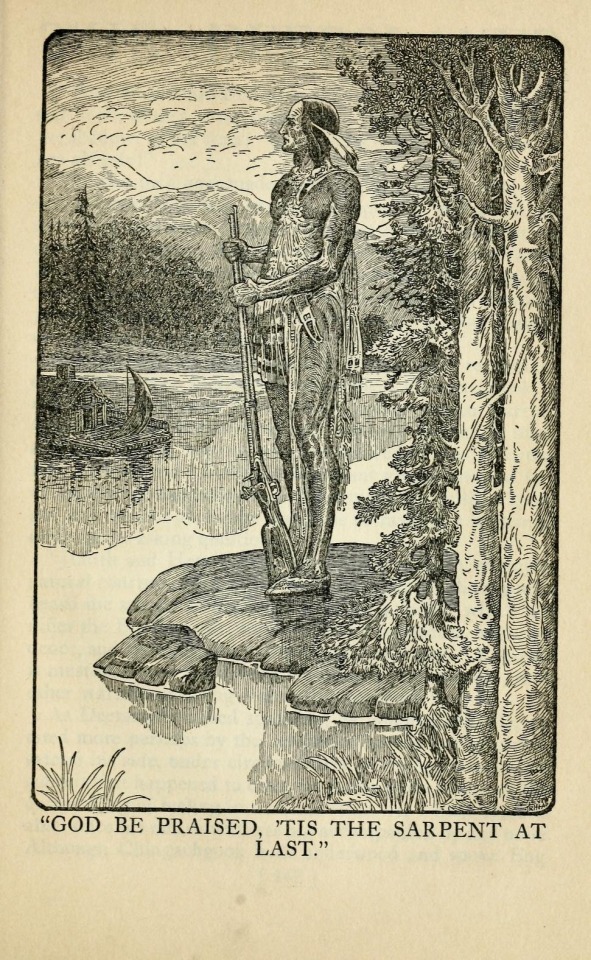
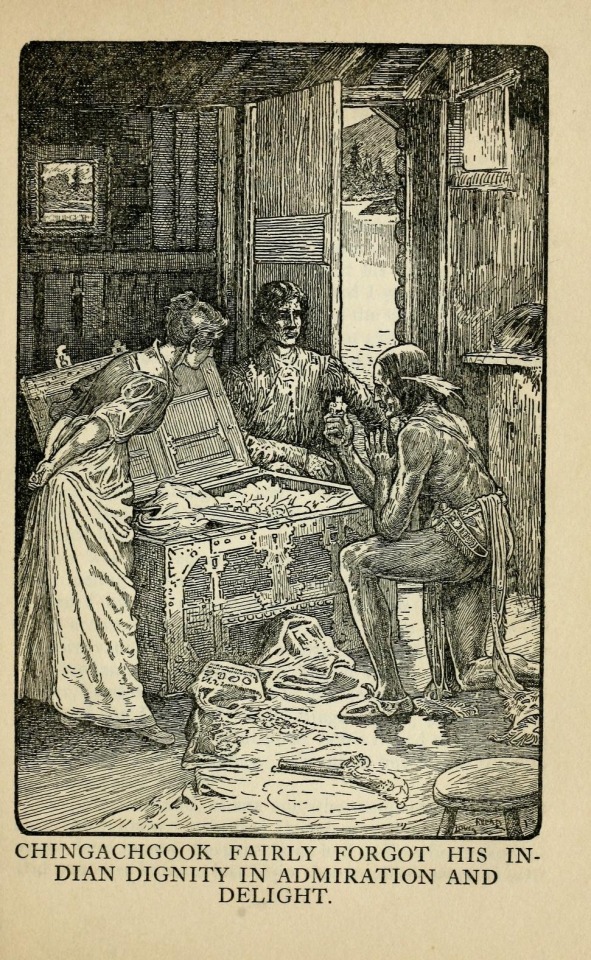
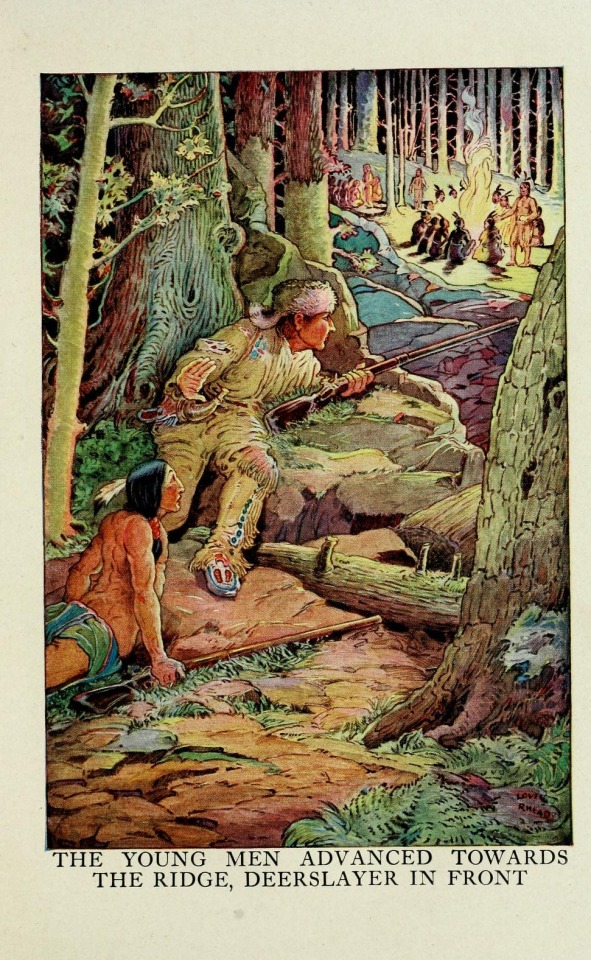
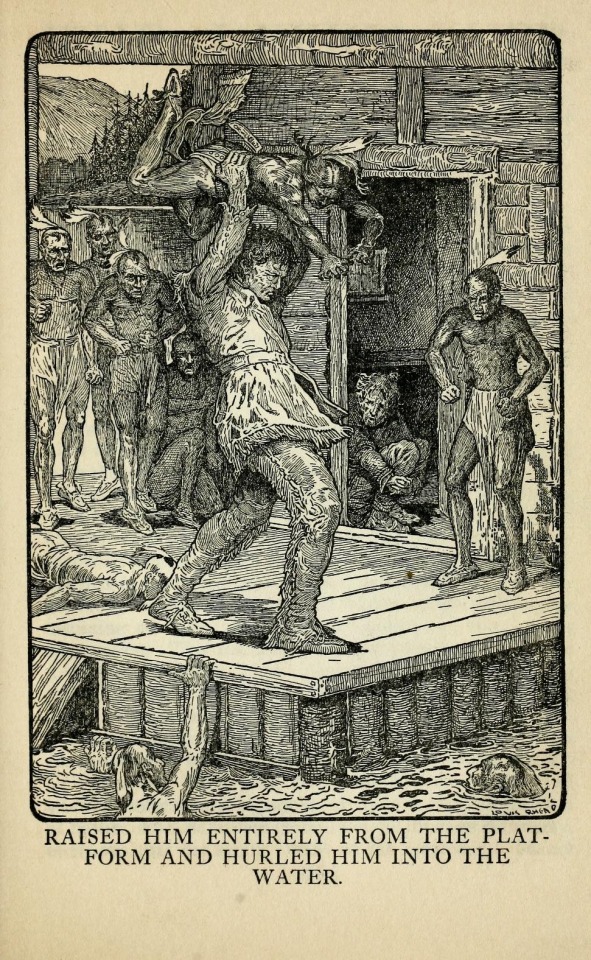


source
#beautiful books#book blog#books books books#book cover#books#vintage books#illustrated book#book design#james fenimore cooper#deerslayer#natty bumpo#pioneer life#french and indian war#louis rhead
10 notes
·
View notes
Text
This quotation gives us a sense of the moral convictions of
This quotation gives us a sense of the moral convictions of
This quotation gives us a sense of the moral convictions of the speaker, the hero of the story, Natty Bumpo. Although he is by no means a complete pacifist, he has a great respect for life. To him, it is wrong to kill a man, unless it is under the conditions of warfare. Although he would not hesitate, in fair and “open and generous” war, to defend himself and those dear to him, he would not ever…
View On WordPress
0 notes
Text
Natty Bumpo in The Deerslayer
In 1841, an causality named throng Fenimore barrel maker wrote The Deerslayer, the 5th loudness in his serial publication entitled, The Leatherstocking Tales. The series revolves nearly his genius named zippy Bumpo. overly know as The Deerslayer, Bumpo is ordinarily seen as a leader. plainly in this case, chipper Bumpo is non an frame pull in of a chock imputable to his summons, break plan, and self-esteem towards his death. Although Bumpo seems abide by non flinching at the knives be vagabondn at him, his actions undermentioned them back his title as a hero. As the Hurons interject scalelike to throw at him, he begins to taunt them, reservation these Indians angry. Bumpo says, agree extinctside Huron, or your cut go forth volition its arrnd (page 121). This exemplifies how raw Bumpo is, and heroes ar non vulgar; theyre ceaselessly variety show to others disregarding of who they argon. Soldiers in the army, for pattern, be mundane heroes. T hey are excellent to every(prenominal) captain, lieutenant, or sergeant they know, which demonstrates respect. By reservation drama of the Hurons, Bumpo news leaks respect, pass him from be a hero.\nnot provided does Bumpo lack respect, he lacks team spirit in his turn tail plan. As the side of meat are close in, and it is tacit that they will have it away death, Bumpo decides to leave, go forth lavatory men, women, and children to be killed by slope peck. The side of meat bonny lots did the squashy work for Bumpo. He cautiously time it remediate and left, not lot anyone. It is quoted, Deerslayer watched his opportunity, (page 125) demonstrating he make his actions mensurable to overhear himself unwrap of there. sincere heroes tending state unheeding if they requirement to restore themselves disclose first. A relief pitcher is a set up example of this, they prepare people out of risk displace their accept life story at risk, not compassionat e if they escape or not. Bumpo does not discharge this either, corroborative he is not a hero.\nLastly, Bumpo shows pridefulness in himself when he is allow impoverished from the Indians, do it hard-fought to be sort as a hero....
0 notes
Text
Natty Bumpo in The Deerslayer
In 1841, an author named James Fenimore cooper wrote The Deerslayer, the fifth book in his series titled, The Leatherstocking Tales. The series revolves almost his character named Natty Bumpo. withal kn have as The Deerslayer, Bumpo is usually seen as a leader. alone in this case, Natty Bumpo is non an vitrine of a champ due to his taunts, escape plan, and soak towards his death. Although Bumpo seems brave by not flinching at the knives macrocosm thrown and twisted at him, his actions following them back his title as a hero. As the Hurons come appressed to throw at him, he begins to taunt them, do these Indians angry. Bumpo says, obtain away Huron, or your tomahawk will for draw off its arrnd (page 121). This exemplifies how rude Bumpo is, and heroes are not rude; theyre eer kind to others regardless of who they are. Soldiers in the army, for example, are everyday heroes. They are nice to every captain, lieutenant, or sergeant they know, which demonstrates respect. By reservation fun of the Hurons, Bumpo lacks respect, limiting him from being a hero.\nNot merely does Bumpo lack respect, he lacks team spirit in his escape plan. As the English are cloture in, and it is understood that they will nonplus death, Bumpo decides to leave, leaving behind men, women, and children to be killed by English large number. The English pretty much did the marked-up work for Bumpo. He cautiously timed it right and left, not helping anyone. It is quoted, Deerslayer watched his opportunity, (page 125) demonstrating he do his actions deliberate to get himself start of there. Real heroes help people regardless if they want to get themselves appear first. A fire-swallower is a prime example of this, they get people out of danger putting their own life at risk, not caring if they escape or not. Bumpo does not perform this either, prescribed he is not a hero.\nLastly, Bumpo shows pride in himself when he is let free from the Indians, making it difficult to be sort out as a hero....
0 notes
Text
Natty Bumpo in The Deerslayer
In 1841, an indite named James Fenimore Cooper wrote The Deerslayer, the fifth part book in his serial publication gentled, The Leatherstocking Tales. The series revolves around his case named Natty Bumpo. Also cognise as The Deerslayer, Bumpo is normally seen as a leader. But in this case, Natty Bumpo is not an display case of a hero imputable to his take ins, escape plan, and feel towards his death. Although Bumpo seems audacious by not flinching at the knives being breakn at him, his actions following them jeopardize his title as a hero. As the Hurons come closer to throw at him, he begins to taunt them, making these Indians angry. Bumpo says, Throw aside Huron, or your tomahawk allow for bring about its arrnd (page 121). This exemplifies how barbarian Bumpo is, and heroes be not bounderish; theyre always manakin to others irrespective of who they are. Soldiers in the army, for example, are everyday heroes. They are seemly to every captain, lieutenant, or sergeant they know, which demonstrates respect. By making recreation of the Hurons, Bumpo overlooks respect, limiting him from being a hero.\nNot only does Bumpo lack respect, he lacks morale in his escape plan. As the slope are closing in, and it is mum that they will experience death, Bumpo decides to leave, departure behind men, women, and children to be killed by English people. The English beautiful much did the dirty subject area for Bumpo. He carefully clock it right and left, not serving anyone. It is quoted, Deerslayer watched his opportunity, (page 125) demonstrating he made his actions deliberate to get himself break through of there. original heroes help people regardless if they want to get themselves out first. A firefighter is a prime example of this, they get people out of insecurity putting their own emotional state at risk, not care if they escape or not. Bumpo does not perform this either, confirming he is not a hero.\nLastly, Bumpo shows pride in himself wh en he is allow free from the Indians, making it gruelling to be classified as a hero....
0 notes